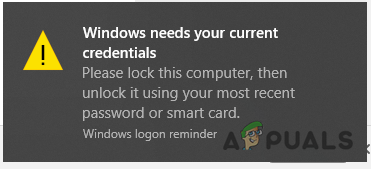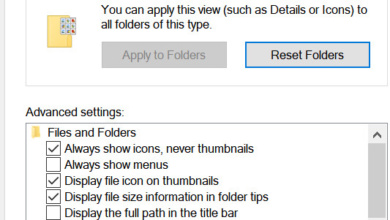How to Disable Taskbar Settings in Windows 10?
A Taskbar in windows is an element of a graphical user interface that typically shows currently running programs, date & time, pinned icons, and the Start Menu icon. Users can modify the Taskbar with different settings according to their needs. However, if a PC is used by multiple users, then everyone can change it according to how they like it. As an administrator, you can prevent other standard users from changing the Taskbar settings frequently. In this article, we will show you methods through which you can easily disable the Taskbar settings on your system.
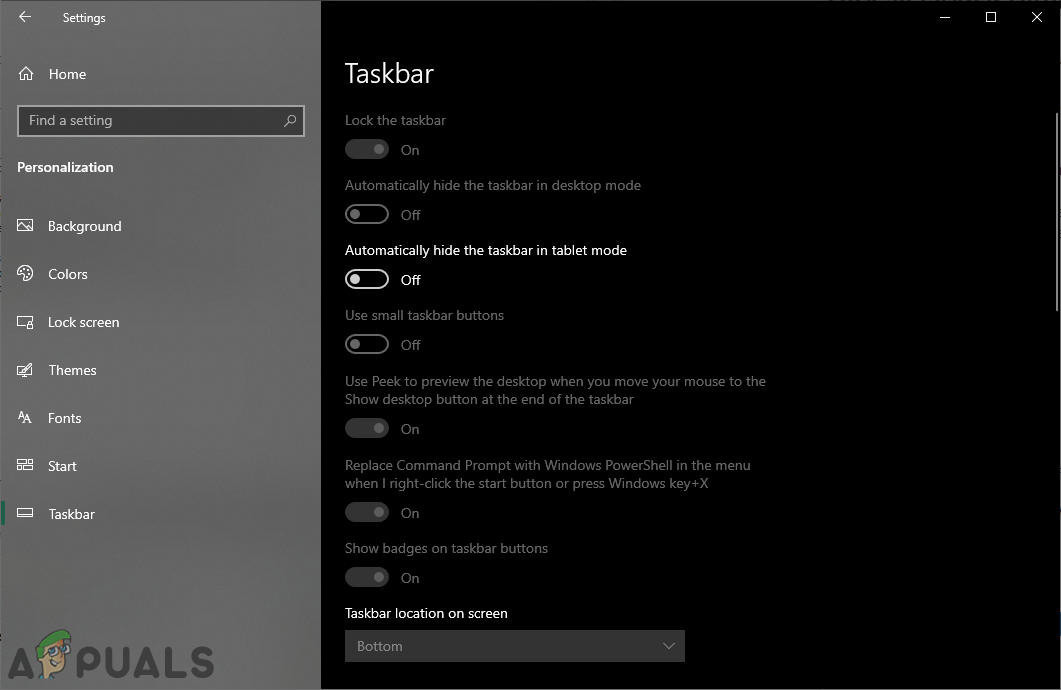
Disabling Taskbar Settings through the Local Group Policy Editor
The Local Group Policy Editor is an administrative tool that is used to control the working environment of computer accounts and user accounts. Instead of going through the Windows Registry, the Local Group Policy Editor is much easier and safer for configuring the same setting.
However, not every Windows operating system has the Local Group Policy Editor available. If you are using Windows Home Edition, then skip this method and try using the Registry Editor method.
If you have the Local Group Policy Editor on your system, then follow the below guide to disable the Taskbar settings on your system:
- Hold the Windows key and press R to open a Run command box. Type “gpedit.msc” and press the Enter key to open the Local Group Policy Editor on your system.
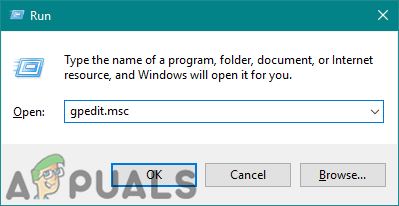
Opening the Local Group Policy Editor - In the User Configuration category, navigate to this specific policy setting:
User Configuration\Administrative Templates\Start Menu and Taskbar\
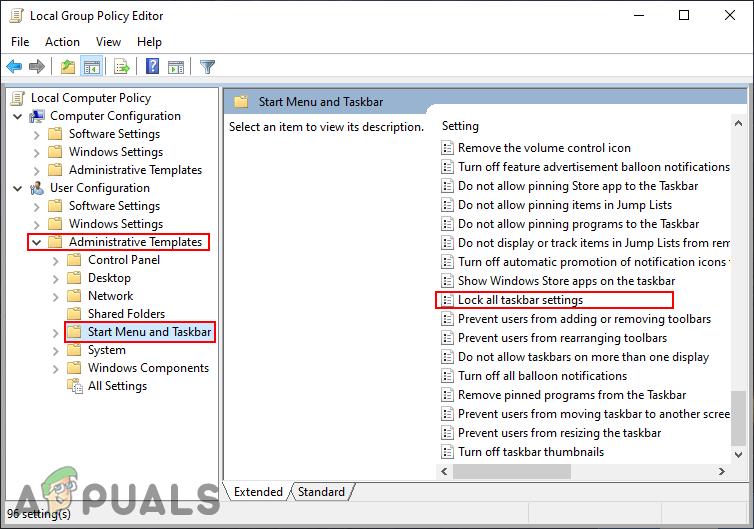
Navigating to the settings - Double-click on the setting “Lock all taskbar settings” and it will open up in another window. Now in here, change the toggle option from Not Configured to Enabled.
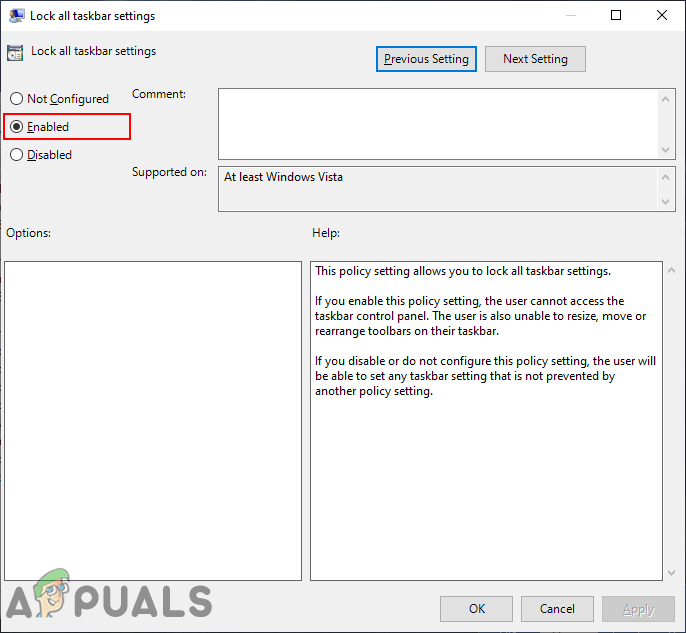
Enabling the setting - To save the changes, click on the Apply/Ok button. This will disable all the Taskbar settings in the Settings app.
- To enable it back anytime in the future, you will need to change the toggle option back to Not Configured or Disabled.
Disabling Taskbar Settings through the Registry Editor
Another method for disabling the Taskbar settings is by using the Registry Editor. This is also the only available method for Windows Home users. If you already used the Group Policy method, then it will automatically update your system Registry. However, if you are directly using this method, then you will be required to create the missing value for the setting. We always recommend users to create a backup before making changes in the Registry of Windows. Follow the below steps to try it out:
- Hold the Windows key and press R to open a Run command box. Now type “regedit” in it and press the Enter key to open the Local Group Policy Editor on your system. If prompted by UAC (User Account Control), then click on the Yes button.
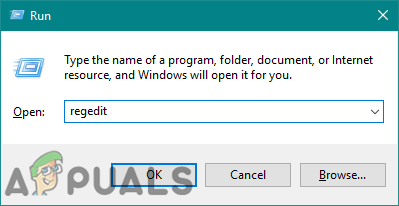
Opening the Registry Editor - In the Current User hive, navigate to this Explorer key:
HKEY_CURRENT_USER\Software\Microsoft\Windows\CurrentVersion\Policies\Explorer
- In the Explorer key, right-click on the right pane and choose the New > DWORD (32-bit) Value option. Name this value as “TaskbarLockAll“.
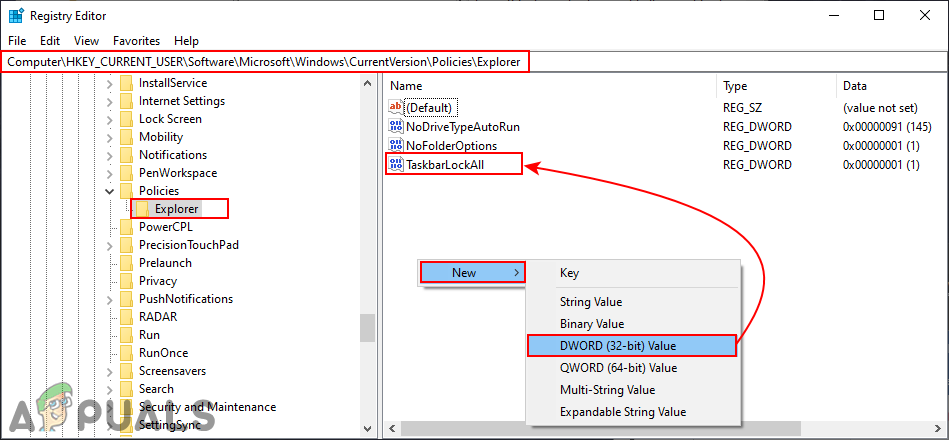
Creating a new value - Double-click on the TaskbarLockAll value and then change the value data to 1.
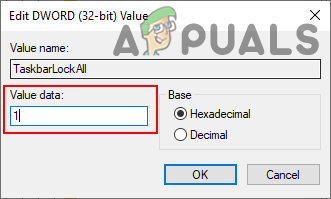
Enabling the value - After all the configurations, make sure you restart your system to apply the changes. This will disable the Taskbar settings in the Settings app.
- To enable it back to normal, you will need to change the value data to 0 or remove the value from the Registry.



